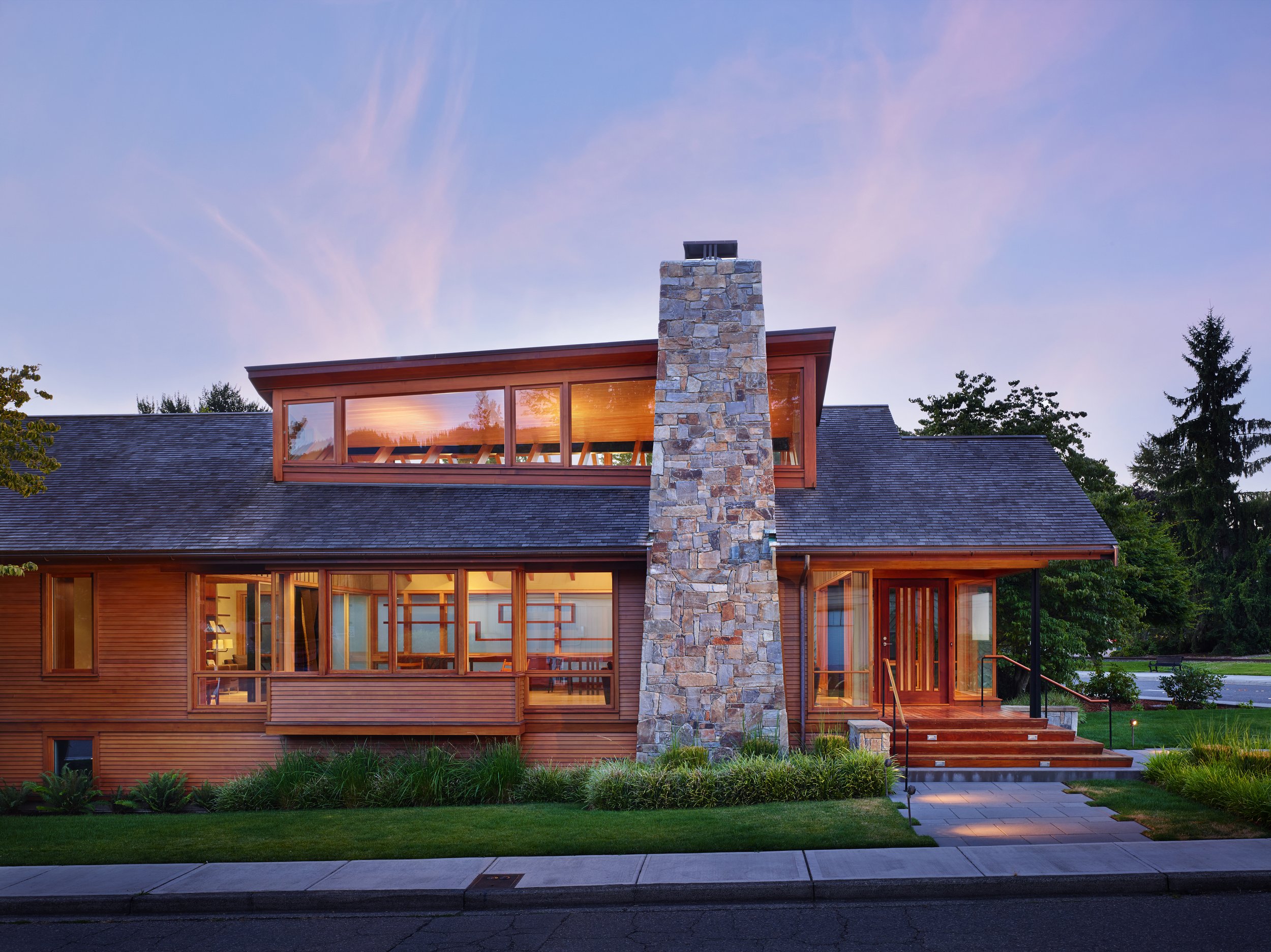
Photography by Benjamin Benschneider
CS Reading Room
A 1905 bungalow located in Issaquah has been completely renovated in order to create a new Reading Room for the Christian Science Church. Anchored by a new reflecting pool on the corner of the site, the new Reading Room brings a frankly modern expression to the older building, creating an intriguing dialogue between past and present.
All existing interior room partitions and ceiling beams were removed in order to carve out a large, open Reading Room, filled with natural light from new Douglas fir windows and generous ceiling light monitors. New exposed roof framing is Douglas fir. The existing fireplace has been rebuilt and faced in Montana ledgestone.
The new Reading Room is a serene space for study and contemplation. The walls are primarily glass, with the entire north wall composed of satin etch glass with “floating” Sapele shelving placed in front of the glass. The end wall of the room features a stone screen wall, with 8-ft high pieces of sawn basalt forming a delicate pattern of light and shadow. There is a small glass-walled “quiet room” on the other side of the basalt screen wall.
Custom furnishings bring a touch of craft to the room. The Sapele reading desks are each supported by a series of cast-bronze legs. Other custom-designed pieces include a grass-patterned wool rug (woven in Nepal) and several naturally-shaped, layered glass coffee tables with intricately patterned waterjet-cut steel bases.
Sustainable design principles were incorporated from the beginning. Renovations are inherently sustainable, since an existing structure is recycled and given new life and purpose rather than being torn down. The demolition included a high percentage of recycling, and the new construction incorporated 30-40% greater insulation values than code requirements (2x8 exterior walls); extensive new windows used for illumination and natural venting; high efficiency heat pump mechanical system; low-VOC paints and stains; and natural materials (low carbon footprint) such as wood and stone on the exterior. Also critical for sustainability is the attention to detailing and craftsmanship, resulting in construction that is extremely durable, and materials are protected for a long life-cycle. Sustainable design is not simply creating a laundry-list of green materials; rather, it is creating enduring building form and construction with appropriate long life-cycle, low-energy consuming materials.













